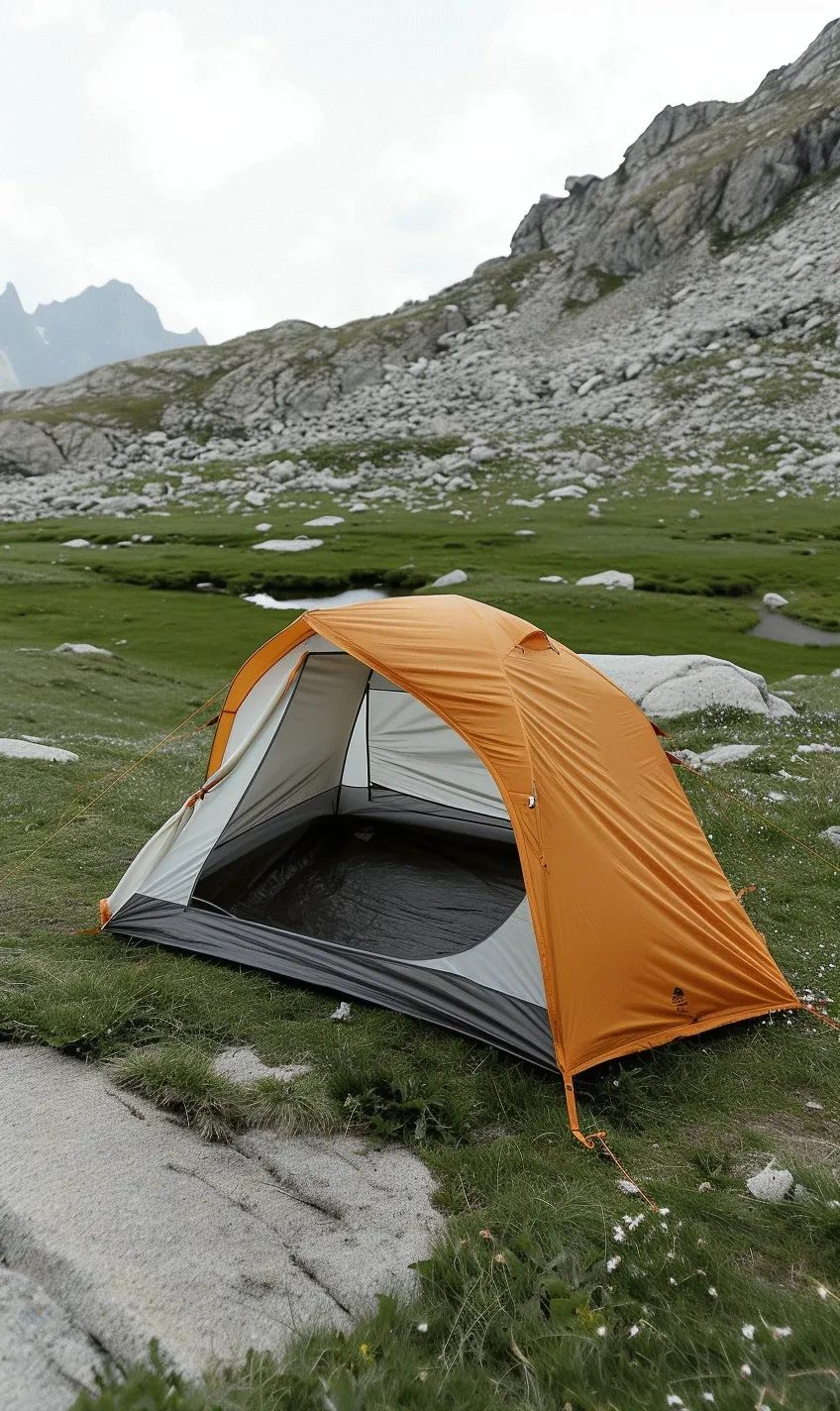


Tent Pitching on Uneven Ground – Overcoming Topographical Challenges
Camping enthusiasts know that finding the perfect campsite isn’t always easy. Sometimes, you come across uneven ground or challenging topography that can make tent pitching a bit more complicated. However, with the proper techniques and creativity, you can quickly overcome these topographical challenges and set up your tent.
Understanding the Importance of a Level Campsite
Before we dive into the techniques, let’s understand why a level campsite is essential. A level surface ensures proper support for your tent, prevents water drainage issues, and provides a comfortable sleeping area.
Preparing the Ground for Tent Pitching on Uneven Terrain
Before up your tent, preparing the ground is essential. What you can do:
- Clear any rocks, branches, or debris that could make the surface uneven.
- Fill in low spots with soil or pine needles to create a more level surface.
- Consider using a groundsheet or tarp to provide extra protection against moisture.
Choosing the Right Tent for Uneven Ground
Choosing a tent for such conditions is essential when camping on uneven terrain. Look for adjustable poles and a flexible frame that can adapt to different ground surfaces. A freestanding tent can also be beneficial as it allows you to move it around and find the most level area.
Essential Tips for Stabilizing Your Tent on Sloping Surfaces
Here are a few tips to stabilize your tent on sloping surfaces:
- Position the tent parallel to the slope rather than perpendicular to it.
- Use rocks or logs to create a small terrace, leveling the ground beneath the tent.
- Tension the guylines on the upslope side to anchor the tent more securely.
Using Guy Lines and Stakes to Secure Your Tent on Uneven Ground
Utilizing guy lines and stakes can significantly improve the stability of your tent on uneven ground. Use them to anchor your tent and create tension, ensuring it remains securely in place, even during windy conditions.
Overcoming Obstacles – Setting Up Your Tent on Rocky Terrain
Finding a suitable spot for tent pitching can be challenging when dealing with rocky terrain. Here’s how you can overcome it:
- Look for a flat area between rocks or boulders to place your tent.
- Use extra padding, like a sleeping pad or folded clothes, under your sleeping area to provide extra comfort.
Solutions for Tent Pitching on Steep Inclines
Setting up a tent on a steep incline can be tricky but not impossible. Consider these solutions:
- Look for a flat section or a small ledge to pitch your tent.
- Use extra guylines and stakes to secure your tent firmly to the ground.
Dealing with Water Drainage on Uneven Ground
Water drainage can be a concern if you’re camping on uneven ground. To prevent water from accumulating under your tent, position it on higher ground or create a small trench around the perimeter to divert water away.
Advanced Techniques for Tent Pitching on Challenging Topography
If you’re an experienced camper up for a challenge, there are advanced techniques worth exploring. These include platform tents or suspended sleeping systems explicitly designed for rugged and uneven terrains. Now that you have these techniques, you’ll be better prepared to tackle the topographical challenges of tent pitching on uneven ground. Remember, practice makes perfect, so don’t stop experimenting and finding what works best. 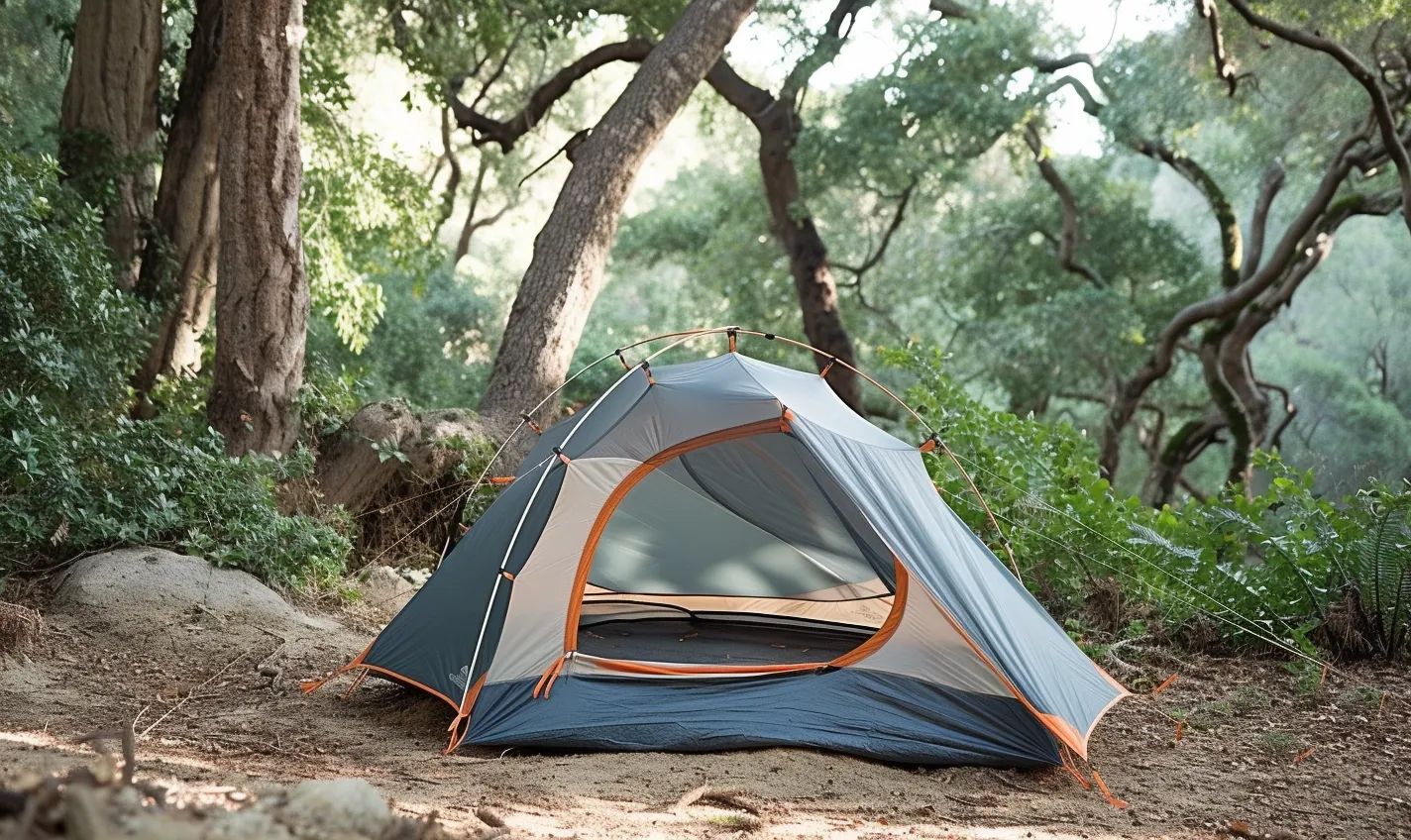
Understanding the Importance of a Level Campsite
When tent pitching on uneven ground, understanding the importance of a level campsite cannot be overstated. A level surface provides stability, comfort, and safety, ensuring a successful and enjoyable camping experience. Here, we dive into why a level campsite matters and how it can make a difference in your outdoor adventure.
Stability
A level campsite offers better stability for your tent. When the ground is even, your tent’s structure is supported evenly, reducing the risk of it tipping over or collapsing. It guarantees a solid foundation for your shelter, protecting you from the elements and providing a secure place to rest.
Comfort
Imagine spending a night on a slanted surface, constantly sliding towards one end of your tent. Not exactly a recipe for a good night’s sleep, right? A level campsite ensures you can lie comfortably without feeling like you’re rolling downhill. It allows for better placement of your sleeping gear and prevents discomfort caused by uneven terrain.
Safety
A level campsite reduces the risk of accidents and injuries. The uneven ground may have hidden hazards such as rocks, tree roots, or loose soil. Choosing a level spot minimizes the chances of tripping, stumbling, or twisting an ankle. It also makes it easier to move around your campsite, especially during nighttime when visibility is reduced.
Easy Setup
Setting up a tent becomes significantly more accessible on a level campsite. You won’t have to deal with the frustration of aligning your tent poles while compensating for uneven terrain. It allows for a quicker and hassle-free setup, giving you more time to relax and enjoy the great outdoors.
Improved Interior Space
A level campsite allows for better utilization of the interior space in your tent. You can arrange your sleeping bags, camping gear, and other equipment more efficiently without worrying about them constantly sliding or taking up unnecessary space. This optimization enhances your overall camping experience and adds to your comfort. 
Preparing the Ground for Tent Pitching on Uneven Terrain
Why Proper Ground Preparation Matters
Proper ground preparation is vital when setting up your tent on uneven ground. While choosing a relatively flat area and hoping for the best may seem tempting, neglecting to prepare the ground can lead to many issues during your camping trip. Preparing the ground beforehand can ensure a more comfortable and stable camping experience.
Clearing the Area
Before pitching your tent, it’s essential to clear the ground of any rocks, sticks, or debris. These objects can not only make the tent area uncomfortable to sleep on but also cause damage to the tent’s floor. It’s best to carefully remove any obstacles and create a clean surface for your tent.
Leveling the Ground
Leveling the ground is crucial to ensure your tent stays stable and secure throughout your camping adventure. If the ground is uneven, consider using a compact shovel or trowel to dig small trenches or build up mounds of dirt to create a more level surface. This will help prevent any rolling or sliding of your tent during the night.
Using Padding for Extra Comfort
If the terrain is particularly rocky or rough, padding underneath your tent can significantly impact your camping experience. You can bring foam pads or an inflatable air mattress to place beneath your tent, making it more comfortable to sleep on and providing an additional layer of insulation.
Safeguarding Against Moisture
Uneven ground can often lead to water pooling around your tent, quickly turning your camping trip into a soggy mess. To prevent this, consider digging small trenches or using tarps to redirect water away from your tent. Additionally, ensure your tent is equipped with a rainfly and properly seam-sealed to protect against any moisture that might seep through the ground. 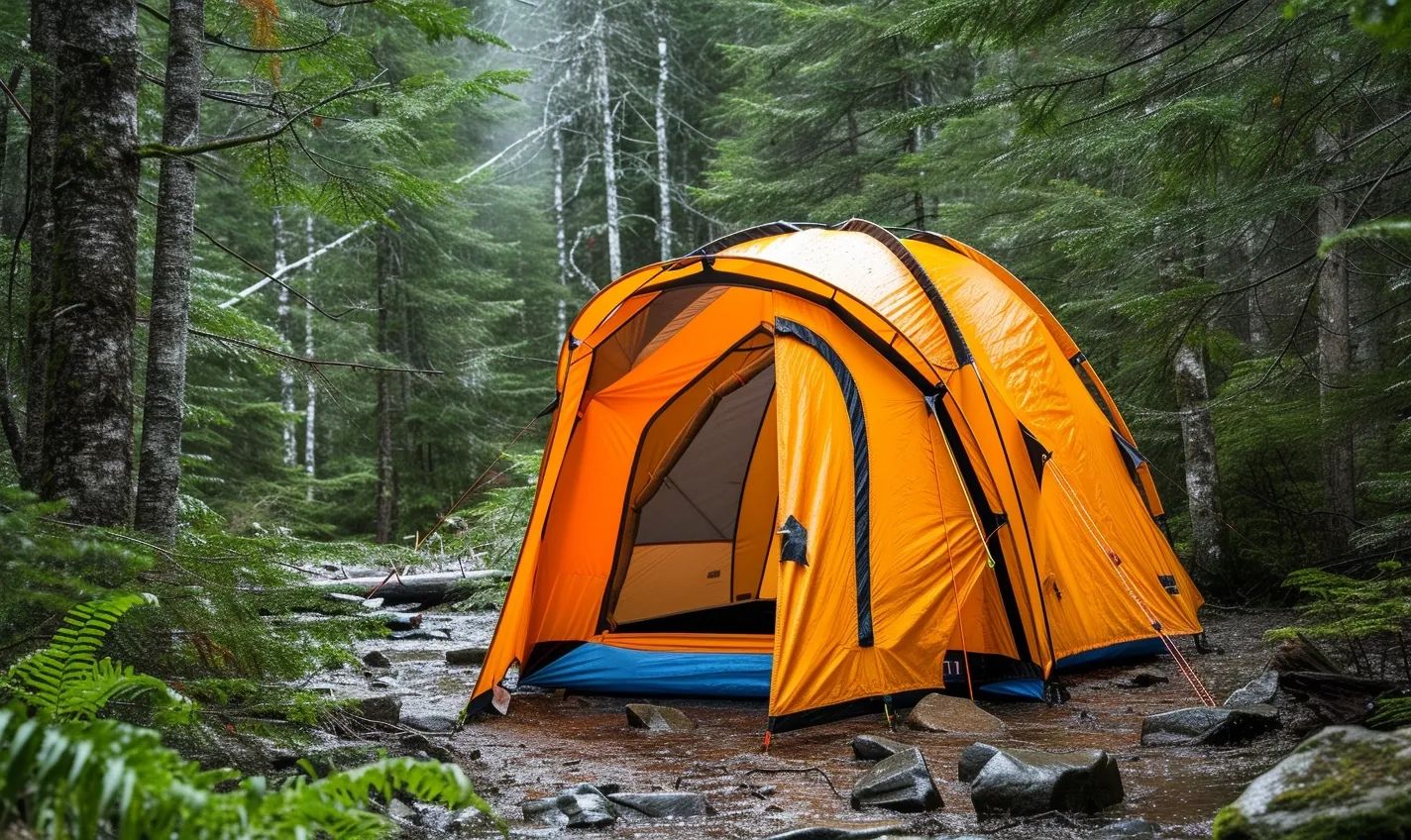
Choosing the Right Tent for Uneven Ground
If you’re an avid camper or outdoor enthusiast, you know that finding a level campsite can sometimes be a challenge. Uneven ground can make pitching a tent difficult, but you can overcome these topographical challenges with the right equipment and techniques. Choosing the right tent for uneven ground is one of the most crucial aspects.
Consider Tent Design and Features
When selecting a tent for camping on uneven terrain, keep the following factors in mind:
- Tent Shape: Opt for a dome-shaped or geodesic tent with a sturdy frame. These designs tend to distribute weight and provide better stability on uneven ground.
- Freestanding Tents: Look for tents with a solid and adjustable pole system. These tents are more accessible to set up and can adapt to different terrains.
- Vestibules: Consider a tent with vestibules or additional rainfly coverage. These features help shield your tent from rain and wind, providing added protection.
- Footprint: Invest in a footprint or groundsheet designed for your tent model. This accessory adds an extra layer of protection and helps prevent moisture seepage.
Size and Weight
When it comes to camping on uneven ground, size, and weight are essential factors to consider:
- Tent Size: Choose a tent size that comfortably accommodates your camping group while considering the available space on uneven ground.
- Weight: Opt for lightweight materials without compromising on durability. This ensures ease of transportation and setup.
- Compactness: Look for tents that pack down easily and take up less space in your camping gear, making it more convenient for uneven terrain.
Durability and Weather Resistance
Since uneven ground can present additional challenges, it’s crucial to select a tent that is durable and weather-resistant:
- Material: Consider tents made from high-quality, waterproof materials such as ripstop nylon or polyester. These materials are more resistant to tears and ensure protection against the elements.
- Seams and Zippers: Check for taped seams and robust zippers to prevent water leakage and ensure the overall sturdiness of the tent.
- Wind Resistance: Look for tents designed to withstand strong winds. Features like reinforced poles and guy lines increase stability, which is crucial for camping on uneven ground.
Choosing the right tent for uneven ground can significantly impact the overall camping experience. When selecting, consider the tent design, size, weight, durability, and weather resistance. With the right tent, you’ll be better equipped to face topographical challenges and enjoy your camping adventure. 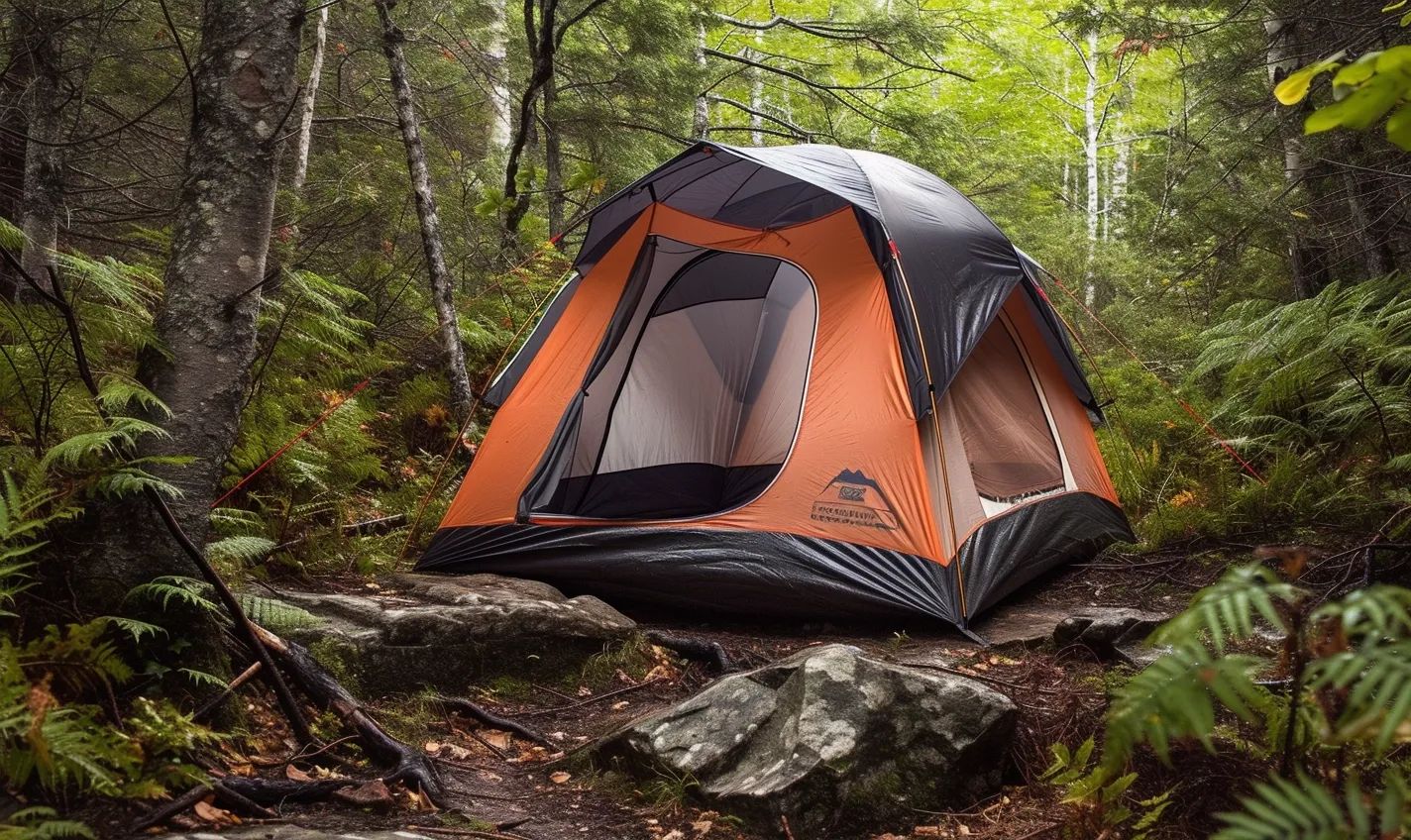
Essential Tips for Stabilizing Your Tent on Sloping Surfaces
When tent pitching on uneven ground, one of the most common challenges you may encounter is setting up your tent on sloping surfaces. The incline can make finding a level and stable spot for your tent challenging, increasing the risk of discomfort and potential damage to your gear. However, with a few essential tips, you can overcome these topographical challenges and enjoy a pleasant camping experience.
Find the Right Spot
Before pitching your tent, take the time to scout the campground and look for a relatively flat area. While finding an altogether level spot may not be possible, aim for the flattest ground you can find. Avoid low-lying areas as they can collect water during rain, and be mindful of potential hazards like rocks, tree roots, or uneven terrain.
Use Extra Equipment
You can use extra equipment like tent stakes, guylines, and a tarp to create stability on sloping surfaces. Here’s how:
- Use longer tent stakes to secure your tent at an angle, ensuring they penetrate the ground securely.
- Attach guylines to the tent and stake them out at angles away from the tent, providing additional tension and support.
- Place a tarp underneath your tent to act as a moisture barrier and provide some cushioning on uneven ground.
Adapt Your Setup
Consider adjusting your setup if the slope is too significant to find a comfortable sleeping area. Stagger your sleeping bags or pads, placing them at an angle that aligns with the hill. This way, you can sleep with your body aligned with the natural incline instead of fighting against it.
Use Rocks or Logs
If your tent keeps sliding downhill, use rocks or logs strategically positioned around your tent’s edges. These natural structures can act as anchors, preventing your tent from moving and offering additional stability. By following these essential tips, you’ll be well-equipped to stabilize your tent on sloping surfaces and conquer the unique challenges of camping on uneven ground. Remember, adaptability and resourcefulness are critical when dealing with topographic obstacles. With creativity and careful planning, you can make the most of any camping location, regardless of its uneven terrain. 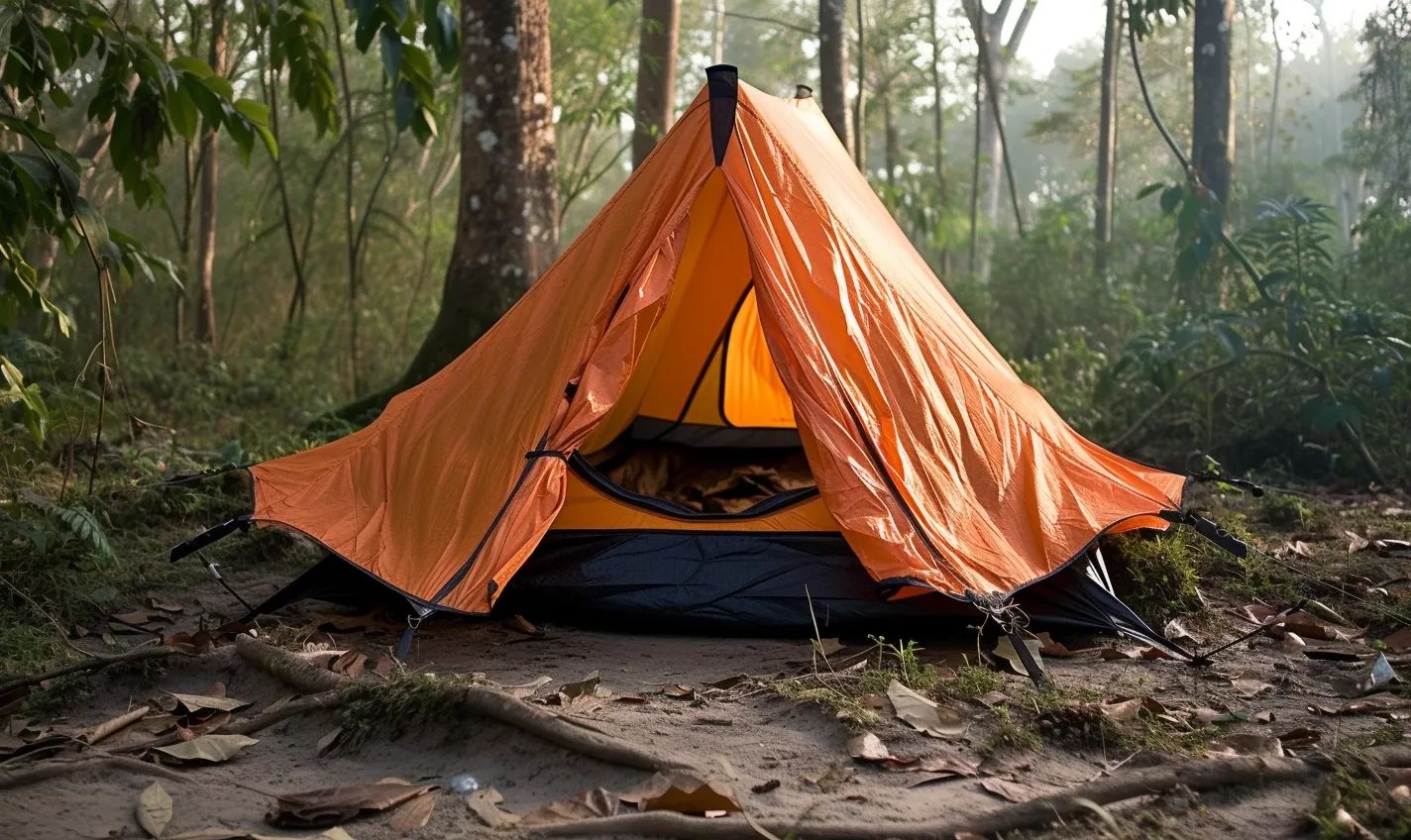
Using Guy Lines and Stakes to Secure Your Tent on Uneven Ground
One of the most effective stabilizing techniques when pitching your tent on uneven ground is using guy lines and stakes. Uneven ground can present a challenge in keeping your tent secure and stable. Still, with the proper use of these tools, you can overcome topographical challenges and ensure a safe and comfortable camping experience. Here’s how you can make the most of guy lines and stakes:
Extend and Attach Guy Lines
Start by extending the guy lines attached to your tent. Guy lines are the cords or ropes that usually come pre-attached to your tent’s rainfly or vestibule. These lines anchor your tent and prevent it from swaying or collapsing in windy conditions. Extending and attaching the guy lines to nearby trees or sturdy objects can support your tent on uneven ground.
Set Up Stakes
Next, find suitable spots around your tent to insert stakes into the ground. Stakes are essential for securing the guy lines and preventing them from loosening or coming undone. Look for firm ground or areas where you can drive the stakes in at an angle to maximize their strength. Push the stakes into the ground until only the top loop or pull tab is exposed, ensuring a tight and secure fit.
Adjust the Guy Lines
Once the stakes are in place, adjust the tension of the guy lines. By tightening or loosening the lines, you can fine-tune the stability of your tent. It’s essential to have a balanced tension across all the guy lines to distribute the stress evenly and maintain the tent’s structural integrity. Avoid over-tightening the lines, as it may cause unnecessary strain on the tent fabric.
Use Natural Anchors
If there are no trees or sturdy objects nearby to attach the guy lines, you can use natural anchors found in the environment. Large rocks or boulders can serve as effective anchor points. Wrap the guy lines around these natural anchors and secure them with a knot or hitch. Be sure to test the stability of the anchor before entirely relying on it to support your tent. Using guy lines and stakes, you can overcome the challenges of pitching a tent on uneven ground. These simple yet efficient tools offer stability and security, allowing you to enjoy your camping adventure without worrying about the condition of your shelter. So, the next time you camp on uneven terrain, remember to make the most of guy lines and stakes to ensure a comfortable and safe campsite. 
Overcoming Obstacles: Setting Up Your Tent on Rocky Terrain
Setting up a tent on rocky terrain can be daunting, but you can conquer this topographical challenge with the proper techniques and patience. Your camping experience shouldn’t be limited to flat ground; pitching a tent on uneven and rocky surfaces can lead to thrilling adventures and unique camping spots. Here are some tips to help you overcome the obstacles of setting up your tent on rocky terrain:
Scout for the Perfect Spot
Begin by scouting the camping area for a suitable location to pitch your tent. Look for areas with relatively flat ground and minimal rocks. Keep an eye out for protruding rocks or any sharp objects that may damage your tent’s floor. Finding the right spot is crucial for a comfortable and secure camping experience.
Clear the Area
Before setting up your tent, clear the campsite of any rocks, twigs, or debris. Removing loose stones and pebbles from the area will make it easier to pitch your tent and provide a more comfortable sleeping surface. Use a ground cloth or tarp to protect your tent and the rocky ground.
Adjust Your Tent Stakes
Tent stakes are essential for securing your tent to the ground. However, on rocky terrain, traditional stakes may not be practical. Consider anchoring your tent with more extensive and substantial stakes, such as rock or heavy-duty pegs. These stakes have a better grip on rocky surfaces and will provide more stability in challenging conditions.
Use Rocks for Additional Anchoring
If the stakes alone are insufficient to secure your tent, you can use rocks as additional anchoring points. Select larger rocks that fit snugly against the tent’s guylines or fabric loops. This will provide extra stability and prevent your tent from shifting or collapsing during windy conditions.
Adapt Your Tent Setup
Consider adapting your tent setup to suit the rocky terrain. You may need to adjust the shape and tension of your tent to accommodate the uneven ground. Tightening the guylines and using additional guyline anchors can help stabilize your tent. Be flexible and willing to make adjustments to ensure a secure and comfortable camping experience. Remember, setting up a tent on rocky terrain requires careful planning and attention to detail. By scouting the area, clearing the campsite, using suitable stakes and anchors, and adapting your tent setup, you can overcome the challenges and enjoy the beauty of camping on rocky terrain. Embrace the excitement and adventure of pitching your tent in unique and breathtaking locations. 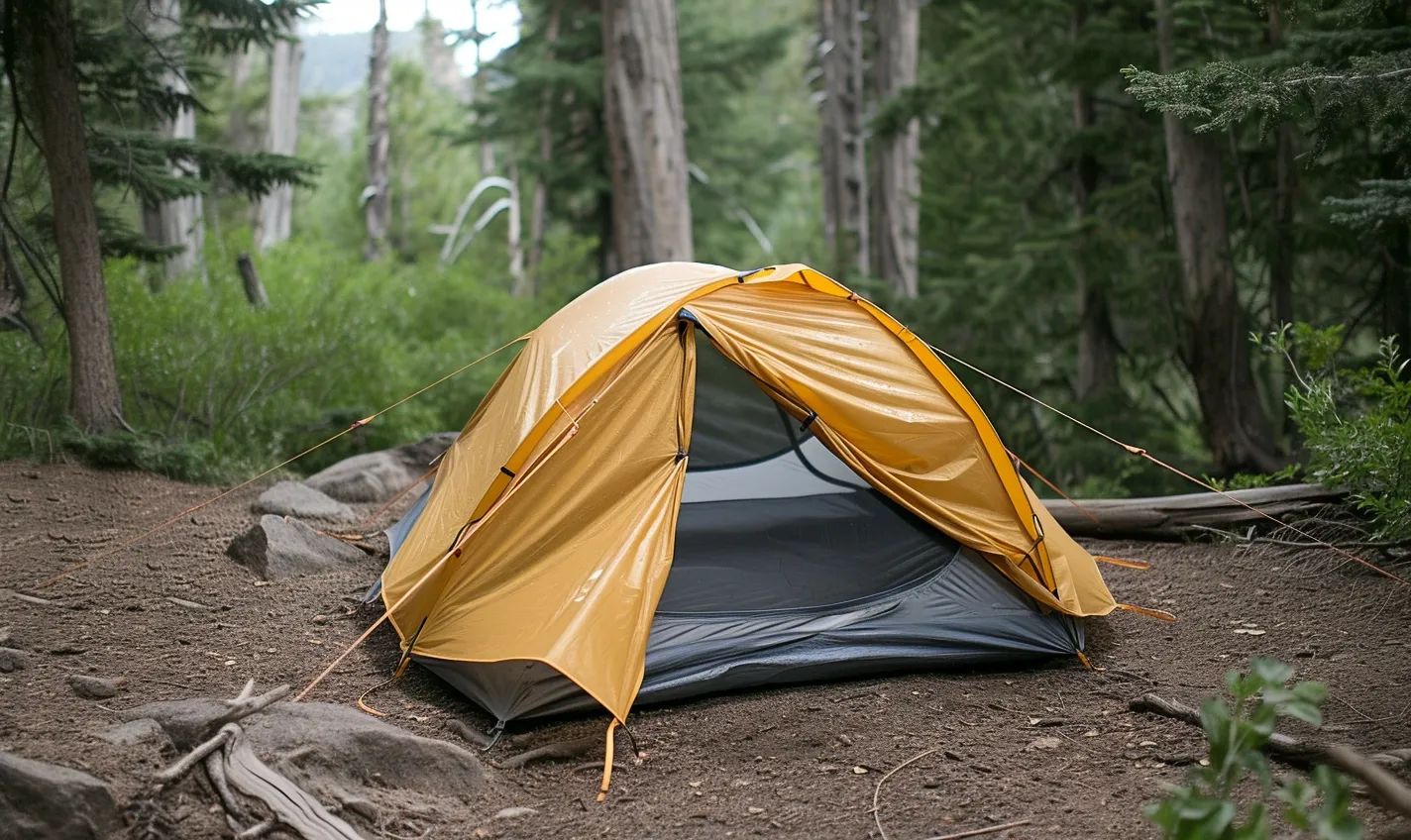
Solutions for Tent Pitching on Steep Inclines
When camping on uneven ground, setting up your tent on a steep incline can present unique challenges. The angle of the terrain can make it difficult to find a level surface, and securing your tent properly becomes crucial to ensure stability and a good night’s sleep. Here are some solutions to help you overcome the topographical challenges of tent pitching on steep inclines.
Assess the slope
Before pitching your tent, take some time to assess the slope of the ground. Determine the direction of the incline and identify any potential hazards, such as rocks or tree roots. This will help you plan where to position your tent and make necessary adjustments.
Use leveling techniques
To create a level sleeping surface inside your tent, consider using leveling techniques such as digging into the slope or building up the ground using natural materials like rocks or branches. You can also place a tarp or groundsheet underneath your tent to provide additional insulation and protection.
Stake your tent strategically.
When pitching your tent on a steep incline, it’s essential to stake it down securely to prevent it from sliding or tipping over. Drive the tent stakes at an angle towards the direction of the slope for added stability. You can also use rocks or heavy objects as anchors if the ground is too hard for stakes.
Utilize guy lines
Using guy lines can help stabilize your tent on a steep incline. Attach them to the tent’s anchor points and secure them to sturdy objects like trees or large rocks. Tensioning the guy lines will provide extra support and prevent your tent from shifting or collapsing.
Consider alternative pitching options.
If the incline is too steep or the ground is too unstable, it’s worth considering alternative pitching options. Look for flatter areas nearby, or consider using a hammock, which can be suspended between trees and provide a comfortable sleeping solution. Tent pitching on steep inclines requires careful planning and attention to detail. By assessing the slope, using leveling techniques, staking strategically, utilizing guy lines, and considering alternative options, you can overcome the challenges of pitching your tent on uneven ground and make the most of your camping experience. 
Dealing with Water Drainage on Uneven Ground
Why is Water Drainage Important?
When setting up your tent on uneven ground, water drainage is one of the key challenges you may face. Proper water drainage is essential for a comfortable camping experience and to prevent potential damage to your tent. Here are a few tips to help you overcome this topographical challenge.
Choose a high spot for Your Tent.
Look for a slightly elevated area where rainwater naturally flows away from your tent. Avoid pitching your tent in low-lying areas or areas where water can collect, such as depressions. Selecting a higher spot can minimize the risk of water pooling around your tent.
Evaluate the Surface and Remove Obstacles
Before pitching your tent, carefully examine the ground for any rocks, sticks, or other debris obstructing water flow. Clear away these obstacles to ensure proper drainage. Leveling the area as much as possible can also aid in water runoff.
Utilize Trenches and Diversion Techniques
If you anticipate heavy rainfall or are camping uneven ground, consider creating trenches or channels around your tent to redirect water away. Dig a shallow trench uphill from your tent and guide the water away from your sleeping area. You can also use tarps as makeshift diversion channels to protect your tent from water runoff.
Position Your Rainfly Correctly
Your tent’s rainfly is designed to provide additional protection against rainfall. Ensure that your rainfly is installed correctly and extends beyond the tent footprint. This will help divert water away from the walls and prevent it from seeping inside.
Use Waterproofing Products
Use waterproofing products to seal your tent seams, zippers, and other potential water entry points. This added layer of protection can significantly reduce the risk of water leakage, even on uneven ground. Remember that while you can take steps to mitigate water drainage issues, it’s essential to be prepared for unexpected weather conditions. Always check the local weather forecast before your camping trip and have a backup plan in case of heavy rain or severe storms. By following these tips, you can ensure proper water drainage and a dry camping experience, even on uneven ground. This will not only keep you comfortable but also protect your gear and prolong the life of your tent.
Advanced Techniques for Tent Pitching on Challenging Topography
When it comes to outdoor camping, finding a suitable spot to pitch your tent can sometimes be challenging. Uneven ground, steep inclines, rocky terrain, and other topographical features can make tent pitching daunting. However, with a few advanced techniques and some preparation, you can overcome these challenges and enjoy a comfortable camping experience. Here are some tips to help you pitch your tent on challenging topography:
Utilize leveling tools
Before pitching your tent, ensuring the ground is as level as possible is essential. Use a leveling tool, such as a trim bubble or carpenter’s level, to check the slope. Adjust the location of your tent accordingly, keeping it in the flattest area available. This will help prevent discomfort and potential issues with water pooling inside your tent.
Create a stable base.
If the ground is uneven or rocky, create a stable base using plywood or foam floor tiles. This will provide a level surface for your tent and add an extra insulation layer. Clear away any debris or sharp objects that could damage the tent floor. Avoid placing your tent directly on rocks or tree roots, as they can cause discomfort and damage over time.
Adapt your tent-pitching technique.
Depending on the topography, you may need to adapt your tent-pitching technique. For example, consider placing the tent diagonally on steep inclines to use the available space better. Use additional guylines and stakes to secure your tent firmly to the ground, providing extra stability against strong winds or uneven terrain.
Consider lightweight and versatile tents.
A lightweight and versatile tent is advisable when camping on challenging topography. Look for tents specifically designed for uneven ground or mountaineering, as they typically have features like multiple attachment points and adjustable poles for added stability. These tents are designed to withstand harsh conditions and provide a comfortable shelter.
Learn tent-pitching techniques for different terrains.
As an experienced camper, learning different tent-pitching techniques for various terrains is always beneficial. This knowledge will help you overcome any topographical challenge while camping. Attend workshops or watch online tutorials to explore tent-pitching methods on challenging terrain. With these advanced techniques, you can confidently pitch your tent on challenging topography and enjoy a comfortable camping experience. Always prioritize safety and consider the environmental impact of your camping activities. Happy camping!
Conclusion
In conclusion, tent pitching on uneven ground can be a daunting task, but with the proper knowledge and techniques, you can overcome any topographical challenge that comes your way. Remember to choose a suitable tent that offers flexibility and adjustability to accommodate uneven terrain. Take the time to survey the campsite and identify potential obstacles or hazards. Use leveling techniques like rocks or logs to create a stable base for your tent.
Additionally, consider using guylines and stakes to secure your tent and help it withstand harsh weather conditions. Following these tips and being prepared, pitching a tent on uneven ground doesn’t have to be stressful. Embrace the adventure of camping in diverse landscapes and celebrate the uniqueness that each camping spot has to offer.
Remember, practice makes perfect, so don’t get discouraged if it takes a few tries to get it right. With time and experience, you’ll become a tent-pitching expert even on the most challenging topographies. Happy camping!
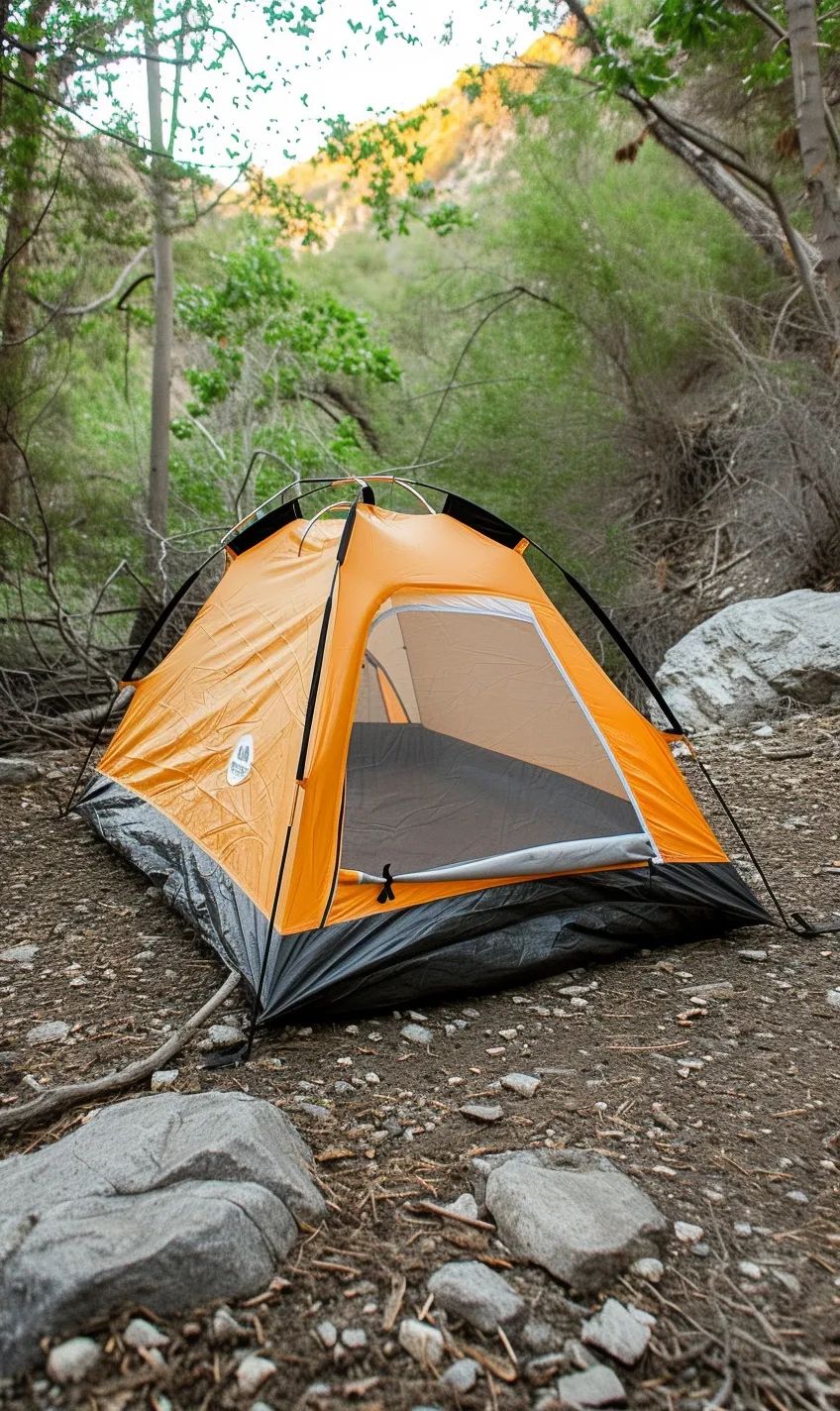
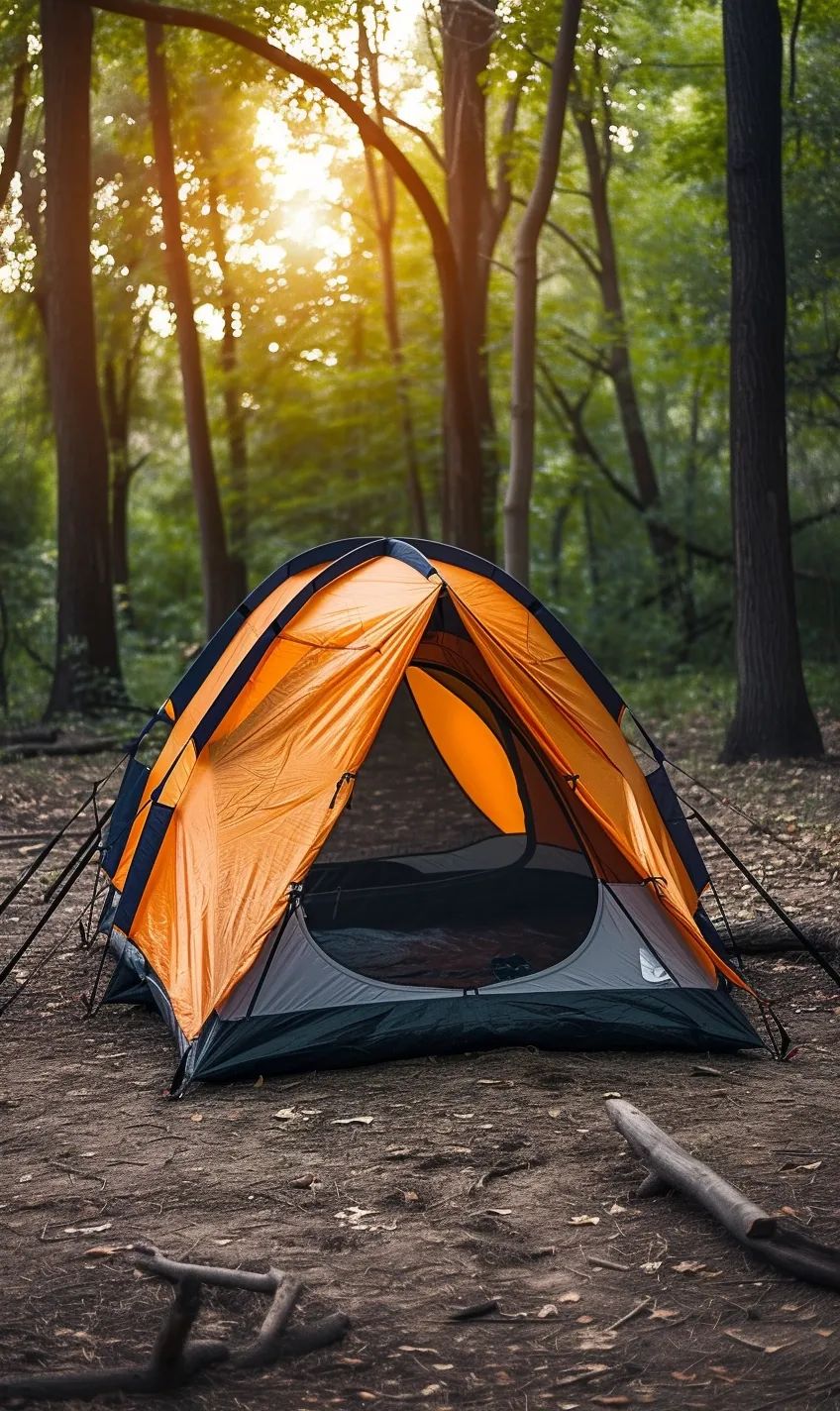
Frequently Asked Questions (FAQs)
How do I pitch a tent on uneven ground?
What are some tips for tent pitching on a slope?
How can I pitch a tent on rocky terrain?
What should I do if the ground is too soft for tent pitching?
What techniques can help me overcome topographical challenges while tent pitching?
Whether you are an avid camper or just starting, pitching a tent on uneven ground can present challenges. From rocky terrain to sloping landscapes, topographical obstacles can make setting up camp seem like an uphill battle. But fear not, fellow adventurers, for with the proper knowledge and techniques, you can overcome these challenges and have a comfortable and secure camping experience.
In this blog post, we will delve into the art of tent pitching on uneven ground and explore various strategies to conquer any topographical challenge that comes your way. We will discuss essential tools, helpful tips, and step-by-step techniques to ensure a sturdy tent setup, no matter the landscape. So, join me as we embark on a journey to master the art of tent pitching on uneven ground. Get ready to conquer mountains, conquer hills, and conquer all that Mother Nature throws at you!



Tent Pitching on Uneven Ground – Overcoming Topographical Challenges
Camping enthusiasts know that finding the perfect campsite isn’t always easy. Sometimes, you come across uneven ground or challenging topography that can make tent pitching a bit more complicated. However, with the proper techniques and creativity, you can quickly overcome these topographical challenges and set up your tent.
Understanding the Importance of a Level Campsite
Before we dive into the techniques, let’s understand why a level campsite is essential. A level surface ensures proper support for your tent, prevents water drainage issues, and provides a comfortable sleeping area.
Preparing the Ground for Tent Pitching on Uneven Terrain
Before up your tent, preparing the ground is essential. What you can do:
- Clear any rocks, branches, or debris that could make the surface uneven.
- Fill in low spots with soil or pine needles to create a more level surface.
- Consider using a groundsheet or tarp to provide extra protection against moisture.
Choosing the Right Tent for Uneven Ground
Choosing a tent for such conditions is essential when camping on uneven terrain. Look for adjustable poles and a flexible frame that can adapt to different ground surfaces. A freestanding tent can also be beneficial as it allows you to move it around and find the most level area.
Essential Tips for Stabilizing Your Tent on Sloping Surfaces
Here are a few tips to stabilize your tent on sloping surfaces:
- Position the tent parallel to the slope rather than perpendicular to it.
- Use rocks or logs to create a small terrace, leveling the ground beneath the tent.
- Tension the guylines on the upslope side to anchor the tent more securely.
Using Guy Lines and Stakes to Secure Your Tent on Uneven Ground
Utilizing guy lines and stakes can significantly improve the stability of your tent on uneven ground. Use them to anchor your tent and create tension, ensuring it remains securely in place, even during windy conditions.
Overcoming Obstacles – Setting Up Your Tent on Rocky Terrain
Finding a suitable spot for tent pitching can be challenging when dealing with rocky terrain. Here’s how you can overcome it:
- Look for a flat area between rocks or boulders to place your tent.
- Use extra padding, like a sleeping pad or folded clothes, under your sleeping area to provide extra comfort.
Solutions for Tent Pitching on Steep Inclines
Setting up a tent on a steep incline can be tricky but not impossible. Consider these solutions:
- Look for a flat section or a small ledge to pitch your tent.
- Use extra guylines and stakes to secure your tent firmly to the ground.
Dealing with Water Drainage on Uneven Ground
Water drainage can be a concern if you’re camping on uneven ground. To prevent water from accumulating under your tent, position it on higher ground or create a small trench around the perimeter to divert water away.
Advanced Techniques for Tent Pitching on Challenging Topography
If you’re an experienced camper up for a challenge, there are advanced techniques worth exploring. These include platform tents or suspended sleeping systems explicitly designed for rugged and uneven terrains. Now that you have these techniques, you’ll be better prepared to tackle the topographical challenges of tent pitching on uneven ground. Remember, practice makes perfect, so don’t stop experimenting and finding what works best. 
Understanding the Importance of a Level Campsite
When tent pitching on uneven ground, understanding the importance of a level campsite cannot be overstated. A level surface provides stability, comfort, and safety, ensuring a successful and enjoyable camping experience. Here, we dive into why a level campsite matters and how it can make a difference in your outdoor adventure.
Stability
A level campsite offers better stability for your tent. When the ground is even, your tent’s structure is supported evenly, reducing the risk of it tipping over or collapsing. It guarantees a solid foundation for your shelter, protecting you from the elements and providing a secure place to rest.
Comfort
Imagine spending a night on a slanted surface, constantly sliding towards one end of your tent. Not exactly a recipe for a good night’s sleep, right? A level campsite ensures you can lie comfortably without feeling like you’re rolling downhill. It allows for better placement of your sleeping gear and prevents discomfort caused by uneven terrain.
Safety
A level campsite reduces the risk of accidents and injuries. The uneven ground may have hidden hazards such as rocks, tree roots, or loose soil. Choosing a level spot minimizes the chances of tripping, stumbling, or twisting an ankle. It also makes it easier to move around your campsite, especially during nighttime when visibility is reduced.
Easy Setup
Setting up a tent becomes significantly more accessible on a level campsite. You won’t have to deal with the frustration of aligning your tent poles while compensating for uneven terrain. It allows for a quicker and hassle-free setup, giving you more time to relax and enjoy the great outdoors.
Improved Interior Space
A level campsite allows for better utilization of the interior space in your tent. You can arrange your sleeping bags, camping gear, and other equipment more efficiently without worrying about them constantly sliding or taking up unnecessary space. This optimization enhances your overall camping experience and adds to your comfort. 
Preparing the Ground for Tent Pitching on Uneven Terrain
Why Proper Ground Preparation Matters
Proper ground preparation is vital when setting up your tent on uneven ground. While choosing a relatively flat area and hoping for the best may seem tempting, neglecting to prepare the ground can lead to many issues during your camping trip. Preparing the ground beforehand can ensure a more comfortable and stable camping experience.
Clearing the Area
Before pitching your tent, it’s essential to clear the ground of any rocks, sticks, or debris. These objects can not only make the tent area uncomfortable to sleep on but also cause damage to the tent’s floor. It’s best to carefully remove any obstacles and create a clean surface for your tent.
Leveling the Ground
Leveling the ground is crucial to ensure your tent stays stable and secure throughout your camping adventure. If the ground is uneven, consider using a compact shovel or trowel to dig small trenches or build up mounds of dirt to create a more level surface. This will help prevent any rolling or sliding of your tent during the night.
Using Padding for Extra Comfort
If the terrain is particularly rocky or rough, padding underneath your tent can significantly impact your camping experience. You can bring foam pads or an inflatable air mattress to place beneath your tent, making it more comfortable to sleep on and providing an additional layer of insulation.
Safeguarding Against Moisture
Uneven ground can often lead to water pooling around your tent, quickly turning your camping trip into a soggy mess. To prevent this, consider digging small trenches or using tarps to redirect water away from your tent. Additionally, ensure your tent is equipped with a rainfly and properly seam-sealed to protect against any moisture that might seep through the ground. 
Choosing the Right Tent for Uneven Ground
If you’re an avid camper or outdoor enthusiast, you know that finding a level campsite can sometimes be a challenge. Uneven ground can make pitching a tent difficult, but you can overcome these topographical challenges with the right equipment and techniques. Choosing the right tent for uneven ground is one of the most crucial aspects.
Consider Tent Design and Features
When selecting a tent for camping on uneven terrain, keep the following factors in mind:
- Tent Shape: Opt for a dome-shaped or geodesic tent with a sturdy frame. These designs tend to distribute weight and provide better stability on uneven ground.
- Freestanding Tents: Look for tents with a solid and adjustable pole system. These tents are more accessible to set up and can adapt to different terrains.
- Vestibules: Consider a tent with vestibules or additional rainfly coverage. These features help shield your tent from rain and wind, providing added protection.
- Footprint: Invest in a footprint or groundsheet designed for your tent model. This accessory adds an extra layer of protection and helps prevent moisture seepage.
Size and Weight
When it comes to camping on uneven ground, size, and weight are essential factors to consider:
- Tent Size: Choose a tent size that comfortably accommodates your camping group while considering the available space on uneven ground.
- Weight: Opt for lightweight materials without compromising on durability. This ensures ease of transportation and setup.
- Compactness: Look for tents that pack down easily and take up less space in your camping gear, making it more convenient for uneven terrain.
Durability and Weather Resistance
Since uneven ground can present additional challenges, it’s crucial to select a tent that is durable and weather-resistant:
- Material: Consider tents made from high-quality, waterproof materials such as ripstop nylon or polyester. These materials are more resistant to tears and ensure protection against the elements.
- Seams and Zippers: Check for taped seams and robust zippers to prevent water leakage and ensure the overall sturdiness of the tent.
- Wind Resistance: Look for tents designed to withstand strong winds. Features like reinforced poles and guy lines increase stability, which is crucial for camping on uneven ground.
Choosing the right tent for uneven ground can significantly impact the overall camping experience. When selecting, consider the tent design, size, weight, durability, and weather resistance. With the right tent, you’ll be better equipped to face topographical challenges and enjoy your camping adventure. 
Essential Tips for Stabilizing Your Tent on Sloping Surfaces
When tent pitching on uneven ground, one of the most common challenges you may encounter is setting up your tent on sloping surfaces. The incline can make finding a level and stable spot for your tent challenging, increasing the risk of discomfort and potential damage to your gear. However, with a few essential tips, you can overcome these topographical challenges and enjoy a pleasant camping experience.
Find the Right Spot
Before pitching your tent, take the time to scout the campground and look for a relatively flat area. While finding an altogether level spot may not be possible, aim for the flattest ground you can find. Avoid low-lying areas as they can collect water during rain, and be mindful of potential hazards like rocks, tree roots, or uneven terrain.
Use Extra Equipment
You can use extra equipment like tent stakes, guylines, and a tarp to create stability on sloping surfaces. Here’s how:
- Use longer tent stakes to secure your tent at an angle, ensuring they penetrate the ground securely.
- Attach guylines to the tent and stake them out at angles away from the tent, providing additional tension and support.
- Place a tarp underneath your tent to act as a moisture barrier and provide some cushioning on uneven ground.
Adapt Your Setup
Consider adjusting your setup if the slope is too significant to find a comfortable sleeping area. Stagger your sleeping bags or pads, placing them at an angle that aligns with the hill. This way, you can sleep with your body aligned with the natural incline instead of fighting against it.
Use Rocks or Logs
If your tent keeps sliding downhill, use rocks or logs strategically positioned around your tent’s edges. These natural structures can act as anchors, preventing your tent from moving and offering additional stability. By following these essential tips, you’ll be well-equipped to stabilize your tent on sloping surfaces and conquer the unique challenges of camping on uneven ground. Remember, adaptability and resourcefulness are critical when dealing with topographic obstacles. With creativity and careful planning, you can make the most of any camping location, regardless of its uneven terrain. 
Using Guy Lines and Stakes to Secure Your Tent on Uneven Ground
One of the most effective stabilizing techniques when pitching your tent on uneven ground is using guy lines and stakes. Uneven ground can present a challenge in keeping your tent secure and stable. Still, with the proper use of these tools, you can overcome topographical challenges and ensure a safe and comfortable camping experience. Here’s how you can make the most of guy lines and stakes:
Extend and Attach Guy Lines
Start by extending the guy lines attached to your tent. Guy lines are the cords or ropes that usually come pre-attached to your tent’s rainfly or vestibule. These lines anchor your tent and prevent it from swaying or collapsing in windy conditions. Extending and attaching the guy lines to nearby trees or sturdy objects can support your tent on uneven ground.
Set Up Stakes
Next, find suitable spots around your tent to insert stakes into the ground. Stakes are essential for securing the guy lines and preventing them from loosening or coming undone. Look for firm ground or areas where you can drive the stakes in at an angle to maximize their strength. Push the stakes into the ground until only the top loop or pull tab is exposed, ensuring a tight and secure fit.
Adjust the Guy Lines
Once the stakes are in place, adjust the tension of the guy lines. By tightening or loosening the lines, you can fine-tune the stability of your tent. It’s essential to have a balanced tension across all the guy lines to distribute the stress evenly and maintain the tent’s structural integrity. Avoid over-tightening the lines, as it may cause unnecessary strain on the tent fabric.
Use Natural Anchors
If there are no trees or sturdy objects nearby to attach the guy lines, you can use natural anchors found in the environment. Large rocks or boulders can serve as effective anchor points. Wrap the guy lines around these natural anchors and secure them with a knot or hitch. Be sure to test the stability of the anchor before entirely relying on it to support your tent. Using guy lines and stakes, you can overcome the challenges of pitching a tent on uneven ground. These simple yet efficient tools offer stability and security, allowing you to enjoy your camping adventure without worrying about the condition of your shelter. So, the next time you camp on uneven terrain, remember to make the most of guy lines and stakes to ensure a comfortable and safe campsite. 
Overcoming Obstacles: Setting Up Your Tent on Rocky Terrain
Setting up a tent on rocky terrain can be daunting, but you can conquer this topographical challenge with the proper techniques and patience. Your camping experience shouldn’t be limited to flat ground; pitching a tent on uneven and rocky surfaces can lead to thrilling adventures and unique camping spots. Here are some tips to help you overcome the obstacles of setting up your tent on rocky terrain:
Scout for the Perfect Spot
Begin by scouting the camping area for a suitable location to pitch your tent. Look for areas with relatively flat ground and minimal rocks. Keep an eye out for protruding rocks or any sharp objects that may damage your tent’s floor. Finding the right spot is crucial for a comfortable and secure camping experience.
Clear the Area
Before setting up your tent, clear the campsite of any rocks, twigs, or debris. Removing loose stones and pebbles from the area will make it easier to pitch your tent and provide a more comfortable sleeping surface. Use a ground cloth or tarp to protect your tent and the rocky ground.
Adjust Your Tent Stakes
Tent stakes are essential for securing your tent to the ground. However, on rocky terrain, traditional stakes may not be practical. Consider anchoring your tent with more extensive and substantial stakes, such as rock or heavy-duty pegs. These stakes have a better grip on rocky surfaces and will provide more stability in challenging conditions.
Use Rocks for Additional Anchoring
If the stakes alone are insufficient to secure your tent, you can use rocks as additional anchoring points. Select larger rocks that fit snugly against the tent’s guylines or fabric loops. This will provide extra stability and prevent your tent from shifting or collapsing during windy conditions.
Adapt Your Tent Setup
Consider adapting your tent setup to suit the rocky terrain. You may need to adjust the shape and tension of your tent to accommodate the uneven ground. Tightening the guylines and using additional guyline anchors can help stabilize your tent. Be flexible and willing to make adjustments to ensure a secure and comfortable camping experience. Remember, setting up a tent on rocky terrain requires careful planning and attention to detail. By scouting the area, clearing the campsite, using suitable stakes and anchors, and adapting your tent setup, you can overcome the challenges and enjoy the beauty of camping on rocky terrain. Embrace the excitement and adventure of pitching your tent in unique and breathtaking locations. 
Solutions for Tent Pitching on Steep Inclines
When camping on uneven ground, setting up your tent on a steep incline can present unique challenges. The angle of the terrain can make it difficult to find a level surface, and securing your tent properly becomes crucial to ensure stability and a good night’s sleep. Here are some solutions to help you overcome the topographical challenges of tent pitching on steep inclines.
Assess the slope
Before pitching your tent, take some time to assess the slope of the ground. Determine the direction of the incline and identify any potential hazards, such as rocks or tree roots. This will help you plan where to position your tent and make necessary adjustments.
Use leveling techniques
To create a level sleeping surface inside your tent, consider using leveling techniques such as digging into the slope or building up the ground using natural materials like rocks or branches. You can also place a tarp or groundsheet underneath your tent to provide additional insulation and protection.
Stake your tent strategically.
When pitching your tent on a steep incline, it’s essential to stake it down securely to prevent it from sliding or tipping over. Drive the tent stakes at an angle towards the direction of the slope for added stability. You can also use rocks or heavy objects as anchors if the ground is too hard for stakes.
Utilize guy lines
Using guy lines can help stabilize your tent on a steep incline. Attach them to the tent’s anchor points and secure them to sturdy objects like trees or large rocks. Tensioning the guy lines will provide extra support and prevent your tent from shifting or collapsing.
Consider alternative pitching options.
If the incline is too steep or the ground is too unstable, it’s worth considering alternative pitching options. Look for flatter areas nearby, or consider using a hammock, which can be suspended between trees and provide a comfortable sleeping solution. Tent pitching on steep inclines requires careful planning and attention to detail. By assessing the slope, using leveling techniques, staking strategically, utilizing guy lines, and considering alternative options, you can overcome the challenges of pitching your tent on uneven ground and make the most of your camping experience. 
Dealing with Water Drainage on Uneven Ground
Why is Water Drainage Important?
When setting up your tent on uneven ground, water drainage is one of the key challenges you may face. Proper water drainage is essential for a comfortable camping experience and to prevent potential damage to your tent. Here are a few tips to help you overcome this topographical challenge.
Choose a high spot for Your Tent.
Look for a slightly elevated area where rainwater naturally flows away from your tent. Avoid pitching your tent in low-lying areas or areas where water can collect, such as depressions. Selecting a higher spot can minimize the risk of water pooling around your tent.
Evaluate the Surface and Remove Obstacles
Before pitching your tent, carefully examine the ground for any rocks, sticks, or other debris obstructing water flow. Clear away these obstacles to ensure proper drainage. Leveling the area as much as possible can also aid in water runoff.
Utilize Trenches and Diversion Techniques
If you anticipate heavy rainfall or are camping uneven ground, consider creating trenches or channels around your tent to redirect water away. Dig a shallow trench uphill from your tent and guide the water away from your sleeping area. You can also use tarps as makeshift diversion channels to protect your tent from water runoff.
Position Your Rainfly Correctly
Your tent’s rainfly is designed to provide additional protection against rainfall. Ensure that your rainfly is installed correctly and extends beyond the tent footprint. This will help divert water away from the walls and prevent it from seeping inside.
Use Waterproofing Products
Use waterproofing products to seal your tent seams, zippers, and other potential water entry points. This added layer of protection can significantly reduce the risk of water leakage, even on uneven ground. Remember that while you can take steps to mitigate water drainage issues, it’s essential to be prepared for unexpected weather conditions. Always check the local weather forecast before your camping trip and have a backup plan in case of heavy rain or severe storms. By following these tips, you can ensure proper water drainage and a dry camping experience, even on uneven ground. This will not only keep you comfortable but also protect your gear and prolong the life of your tent.
Advanced Techniques for Tent Pitching on Challenging Topography
When it comes to outdoor camping, finding a suitable spot to pitch your tent can sometimes be challenging. Uneven ground, steep inclines, rocky terrain, and other topographical features can make tent pitching daunting. However, with a few advanced techniques and some preparation, you can overcome these challenges and enjoy a comfortable camping experience. Here are some tips to help you pitch your tent on challenging topography:
Utilize leveling tools
Before pitching your tent, ensuring the ground is as level as possible is essential. Use a leveling tool, such as a trim bubble or carpenter’s level, to check the slope. Adjust the location of your tent accordingly, keeping it in the flattest area available. This will help prevent discomfort and potential issues with water pooling inside your tent.
Create a stable base.
If the ground is uneven or rocky, create a stable base using plywood or foam floor tiles. This will provide a level surface for your tent and add an extra insulation layer. Clear away any debris or sharp objects that could damage the tent floor. Avoid placing your tent directly on rocks or tree roots, as they can cause discomfort and damage over time.
Adapt your tent-pitching technique.
Depending on the topography, you may need to adapt your tent-pitching technique. For example, consider placing the tent diagonally on steep inclines to use the available space better. Use additional guylines and stakes to secure your tent firmly to the ground, providing extra stability against strong winds or uneven terrain.
Consider lightweight and versatile tents.
A lightweight and versatile tent is advisable when camping on challenging topography. Look for tents specifically designed for uneven ground or mountaineering, as they typically have features like multiple attachment points and adjustable poles for added stability. These tents are designed to withstand harsh conditions and provide a comfortable shelter.
Learn tent-pitching techniques for different terrains.
As an experienced camper, learning different tent-pitching techniques for various terrains is always beneficial. This knowledge will help you overcome any topographical challenge while camping. Attend workshops or watch online tutorials to explore tent-pitching methods on challenging terrain. With these advanced techniques, you can confidently pitch your tent on challenging topography and enjoy a comfortable camping experience. Always prioritize safety and consider the environmental impact of your camping activities. Happy camping!
Conclusion
In conclusion, tent pitching on uneven ground can be a daunting task, but with the proper knowledge and techniques, you can overcome any topographical challenge that comes your way. Remember to choose a suitable tent that offers flexibility and adjustability to accommodate uneven terrain. Take the time to survey the campsite and identify potential obstacles or hazards. Use leveling techniques like rocks or logs to create a stable base for your tent.
Additionally, consider using guylines and stakes to secure your tent and help it withstand harsh weather conditions. Following these tips and being prepared, pitching a tent on uneven ground doesn’t have to be stressful. Embrace the adventure of camping in diverse landscapes and celebrate the uniqueness that each camping spot has to offer.
Remember, practice makes perfect, so don’t get discouraged if it takes a few tries to get it right. With time and experience, you’ll become a tent-pitching expert even on the most challenging topographies. Happy camping!









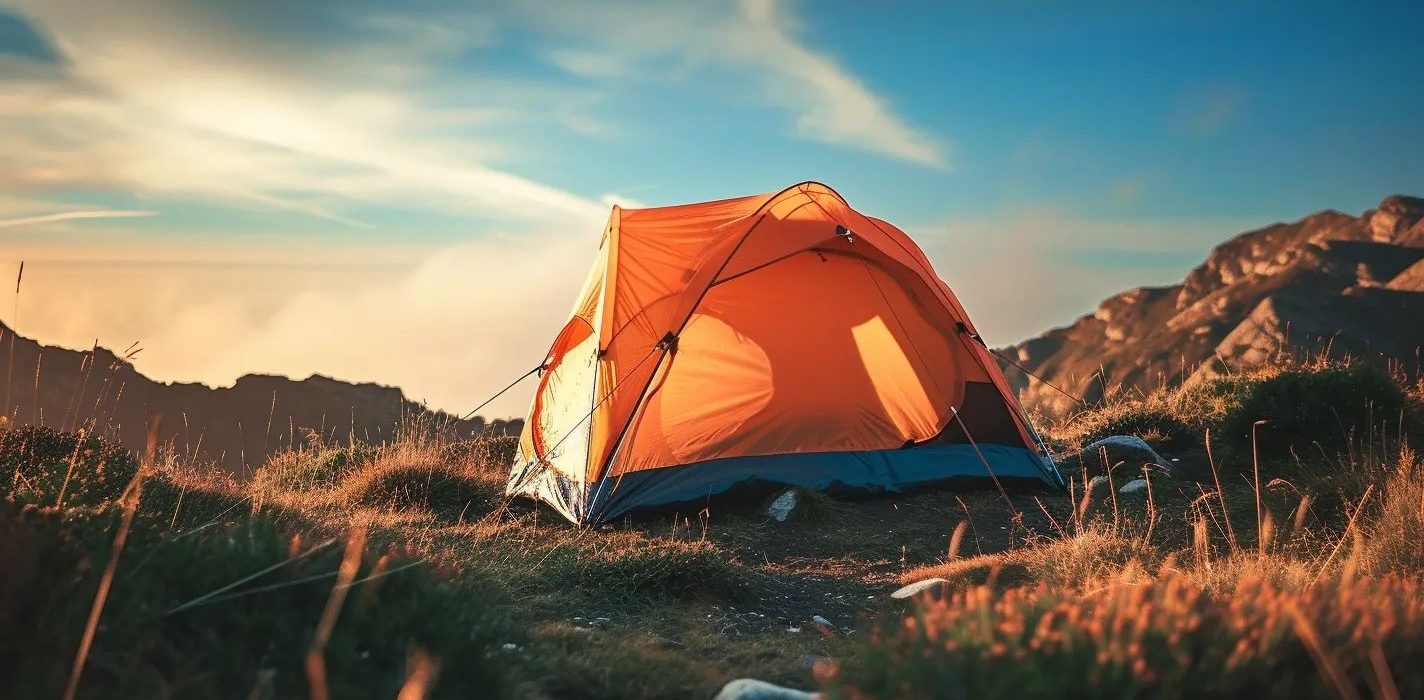


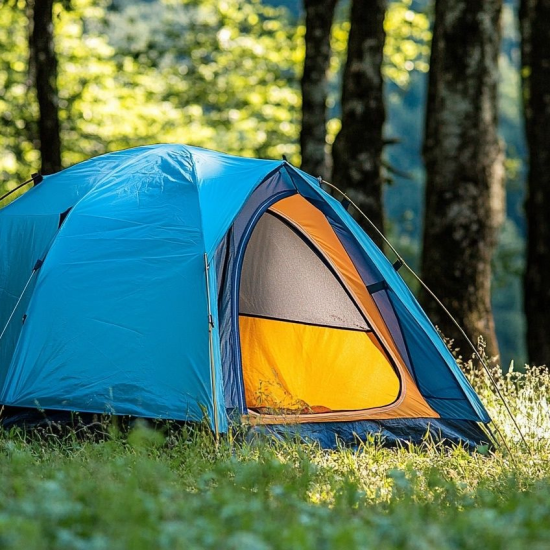
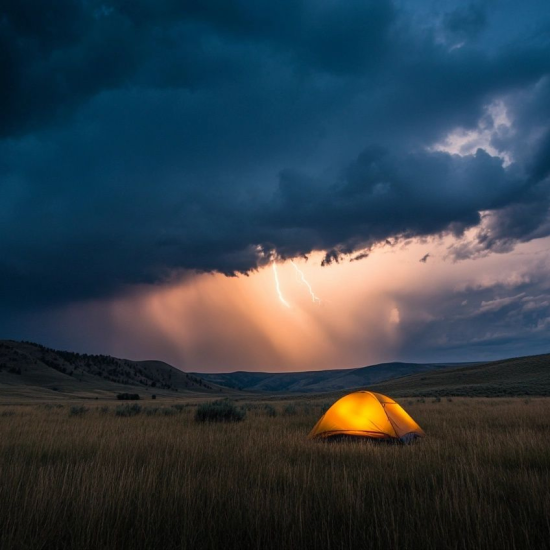
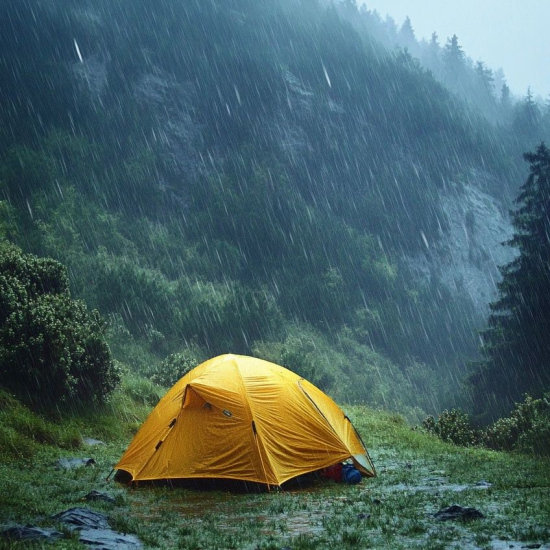
No Comment! Be the first one.